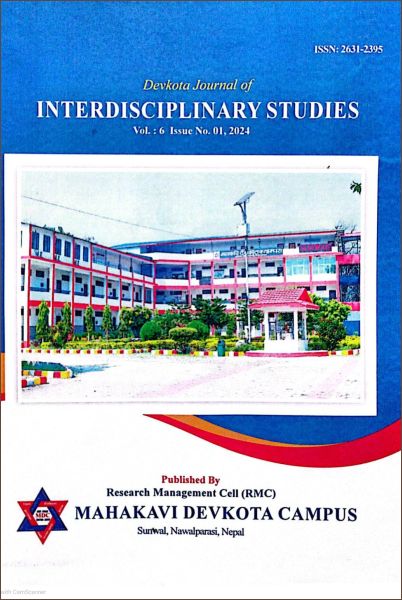Impact of Monetary Policy on Profitability: An Analysis of Nepal's Listed Commercial Banks
DOI:
https://doi.org/10.3126/djis.v6i1.74991Keywords:
Monetary policy, Cash Reserve Ratio, Nepal Rastra Bank, bank profitability, panel data analysisAbstract
The banking industry plays a crucial role in facilitating resource distribution and sustainable development, making it a vital component of Nepal's economic structure. Through tools like the Cash Reserve Ratio (CRR), bank rate, and open market operations, the Nepal Rastra Bank (NRB), which oversees monetary policy, has a significant impact on the liquidity and profitability of commercial banks. Using panel data from 2015 to 2023, this study examines how the Cash Reserve Ratio (CRR) affects the profitability of 20 Nepali commercial banks that are registered. The three key metrics of return on equity (ROE), return on investment (ROI), and return on assets (ROA) are used to evaluate profitability. To investigate the relationship between CRR and these metrics, a simple linear regression model is used. At the 10% significance level, the results show a statistically significant negative impact of CRR on ROA, while the relationships with ROE and ROI are considered statistically insignificant. These results imply that banks' ability to lend is restricted by higher CRR levels, which also limit their revenue-generating potential. On the other hand, by making more money available for lending and investments, lowering the CRR can improve profitability. In order to maximize financial performance, the study highlights how crucial it is for Nepalese commercial banks to include CRR dynamics in their strategic planning. To further understand the relationship between monetary policy and bank profitability, future studies should take into account a wider range of macroeconomic and microeconomic factors.




